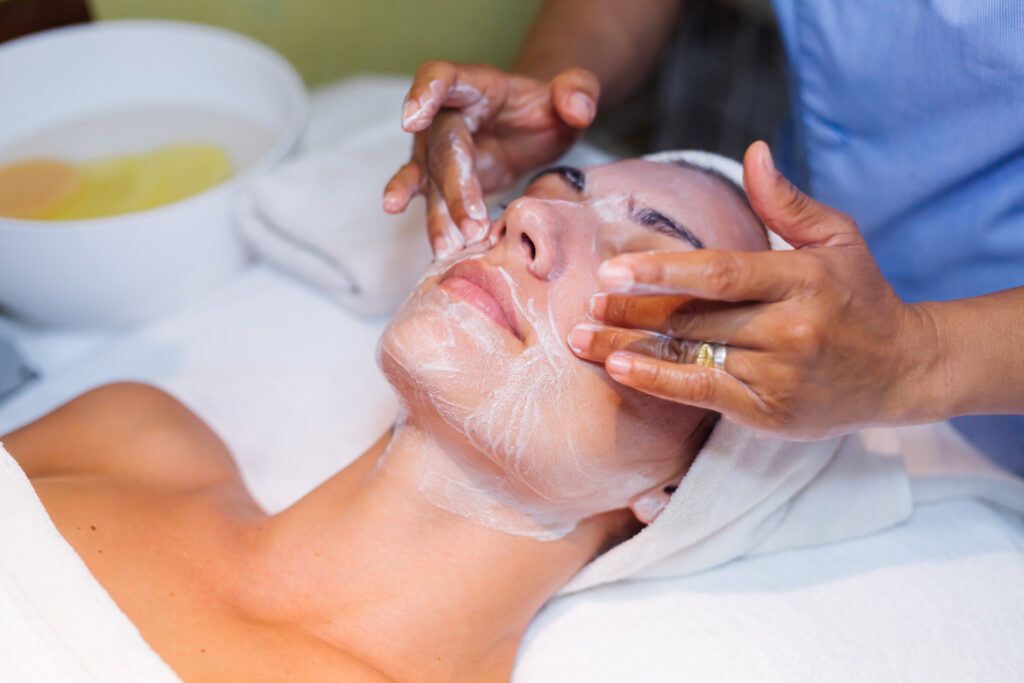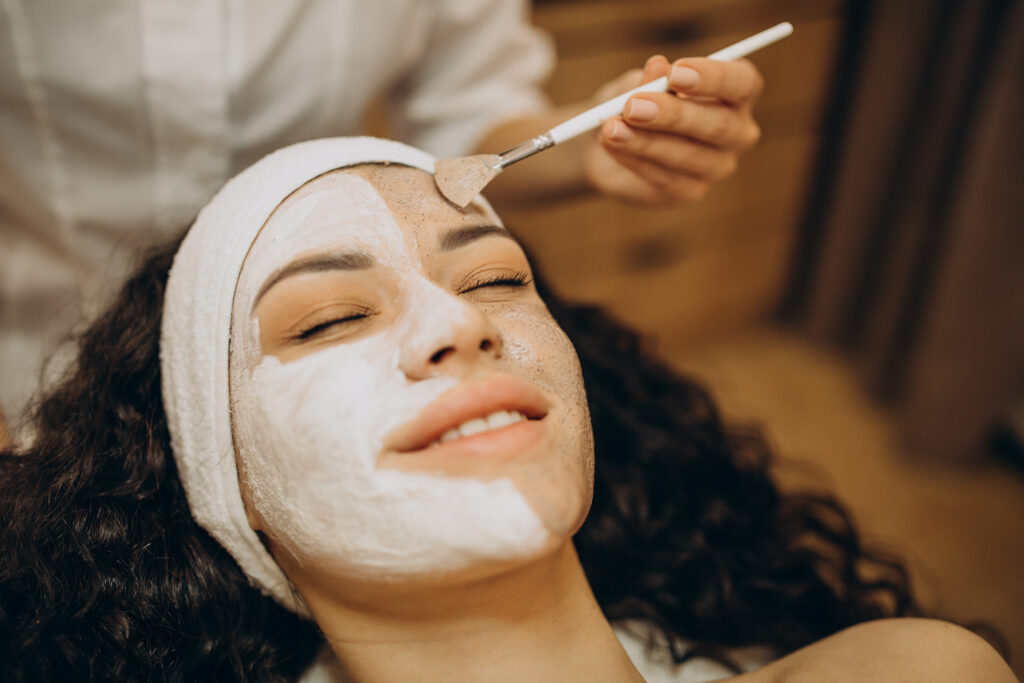Facial treatments have become a cornerstone of skincare routines around the world, offering numerous benefits from deep cleansing to anti-aging effects. Professional facials, in particular, provide deep cleansing, exfoliation, skin rejuvenation, and relaxation, and can be customized for specific skin issues. Yet, the question of how often one should indulge in a facial treatment remains a topic of debate. The answer depends on various factors including skin type, skin concerns, lifestyle, and personal preferences. Let’s delve into these factors to help you determine the optimal frequency for your professional facials.
How Often Should You Get a Facial? The General Rule
A facial is a multi-step skincare treatment performed by a licensed esthetician. It typically involves cleansing, exfoliation, extraction, massage, masks, and the application of serums and moisturisers.
Getting a professional facial provides a deeper cleanse, supports the skin’s natural cellular turnover and collagen production, and targets specific skin issues like acne and aging, contributing significantly to maintaining healthy, youthful-looking skin.
The general rule for how often you should get a facial is about once a month. This frequency aligns with the skin’s natural cell turnover cycle, which typically lasts about 28 days. Monthly facials help maintain skin health by providing deep cleansing, exfoliation, and hydration while addressing specific concerns such as acne, ageing, or dryness.
Factors Influencing Facial Frequency
Determining the optimal frequency for facial treatments is essential for maintaining healthy and vibrant skin. While a general guideline suggests monthly facials, the ideal schedule for YOU can vary widely based on several individual factors. These include your skin type, concerns and age. Incorporating facials into a regular skin care regimen is crucial for addressing specific skin concerns and adapting to changes as your skin ages.

Skin Type
Skin types plays a crucial role in determining how often you should get a facial. Here’s a breakdown based on different skin types:
- Oily and Acne-Prone Skin: Individuals with oily or acne-prone skin may benefit from more frequent facials, approximately every two weeks to a month. These treatments can help manage oil production, clear clogged pores, and reduce breakouts. Managing oil levels for oily skin through deep cleansing facials is essential to prevent overly-drying treatments.
- Dry and Dehydrated Skin: Those with dry or dehydrated skin might consider facials every four to six weeks. Hydrating treatments can help maintain moisture levels and prevent dryness. The importance of hydrating facials for dry skin cannot be overstated, as they nourish and soften parched, flaky skin.
- Sensitive Skin: People with sensitive skin should be cautious with facials and may opt for treatments every six to eight weeks, ensuring the products and techniques used are gentle and non-irritating.
- Normal and Combination Skin: For individuals with normal or combination skin, a monthly facial is generally recommended to maintain skin health and address any emerging concerns.
Skin Concerns
Specific skin concerns also dictate the frequency of facials:
- Acne: As mentioned, acne-prone individuals might need more frequent treatments to manage breakouts. A salicylic acid peel can be particularly effective for treating acne-prone skin by exfoliating and unclogging pores.
- Anti-Aging: For anti-aging benefits, facials that include treatments like microdermabrasion, chemical peels, or LED therapy can be done every four to six weeks to promote collagen production and cell turnover.
- Hyperpigmentation: Treatments aimed at reducing hyperpigmentation, such as brightening facials with ingredients like vitamin C or chemical peels, may be performed every three to four weeks until the desired results are achieved.
- Maintenance: For general skin maintenance and health, a monthly facial is often sufficient.
How Often Should You Get a Facial at Each Age?
Facial treatments are beneficial at any age, but the frequency and type of facial can vary depending on the decade of your life. Here’s a breakdown of how often you should get a professional facial in your 20’s, 30’s, 40’s, 50’s, 60’s and beyond:

In Your 20s
Frequency: Every 4-6 weeks
In your 20s, your skin is generally at its healthiest, but it can still benefit from regular facials. This is the time to focus on maintaining a good skincare routine and addressing any issues like acne or excess oil production. Monthly facials can help manage breakouts, remove dead skin cells, and keep your skin looking fresh and vibrant. Hydrating facials and treatments that focus on deep cleansing and gentle exfoliation are particularly beneficial.
In Your 30s
Frequency: Every 4-6 weeks
During your 30s, you might start to notice the first signs of ageing, such as fine lines and a decrease in skin elasticity. Maintaining a monthly facial routine can help slow down these signs by promoting collagen production and keeping the skin hydrated and healthy. Incorporate treatments that focus on anti-aging, such as facials with antioxidants, peptides, and light chemical peels. Regular exfoliation becomes more crucial to enhance cell turnover and keep your complexion glowing.
In Your 40s
Frequency: Every 4 weeks
In your 40s, the skin’s natural cell turnover rate slows down significantly, and more pronounced signs of aging like wrinkles and hyperpigmentation can appear. A consistent monthly facial routine is essential to address these concerns. Opt for facials that include more intensive treatments like microdermabrasion, stronger chemical peels, and LED light therapy to boost collagen and elastin production. Hydrating and firming facials can also help in maintaining skin plumpness and elasticity.
In Your 50s
Frequency: Every 4 weeks
As you enter your 50s, hormonal changes can significantly impact your skin, leading to dryness, thinning skin, and deeper wrinkles. Monthly facials become crucial for providing intense hydration, nourishment, and treatments that stimulate collagen production. Consider facials that focus on deep hydration, lifting and firming, and incorporating anti-aging ingredients like hyaluronic acid and retinoids. More advanced treatments such as radiofrequency and ultrasound facials can also be beneficial in maintaining skin firmness.
60s and Older
Frequency: Every 4 weeks
In your 60s and beyond, the focus should be on maintaining skin health, hydration, and addressing advanced signs of aging. Regular monthly facials are important for deep hydration, improving skin texture, and reducing the appearance of age spots and sagging. Gentle treatments that promote collagen and elastin, like enzyme facials, gentle chemical peels, and non-invasive tightening procedures, can be very effective.
Lifestyle
Your lifestyle significantly impacts how often you should get a professional facial. High stress levels, common in demanding jobs or busy lifestyles, can lead to skin issues like acne, dullness, and increased sensitivity, making regular facials beneficial for managing these effects and maintaining a healthy complexion. While at the same time, environmental factors such as exposure to pollution, harsh weather conditions, and excessive sun exposure can accelerate skin aging and cause various skin issues. In such environments, frequent facials can help combat these stressors, providing deep cleansing, hydration, and rejuvenation to protect and revitalize your skin. Therefore, considering your lifestyle is crucial in determining the ideal frequency for facials to keep your skin in optimal condition.
Professional Advice
As you can see there are lots of factors at play. That is why it is so important to have a professional assess your skin and recommend a personalized facial schedule based on your unique needs and skin goals. Professional advice ensures that you are not overdoing treatments, which can lead to skin irritation or damage. Instead, they will instruct you on how often you should get a facial for the best results and glowing skin!

If you are in the Moncton area, we recommend you visit Bloom Health and Wellness Studio for a facial appointment and professional assessment of your skin. We will review your skin history and recommend the best facial treatment and a personalized skin care routine to meet your needs.
Benefits of Regular Facials
Regular facials offer a myriad of benefits that contribute to overall skin health and appearance. These include the following.
Deep Cleansing
Facials provide a thorough cleansing with professional-grade cleansers that remove dirt, oil, and impurities from the skin, which regular cleansing might miss. This deep cleanse prevents clogged pores and breakouts, leading to clearer and healthier skin.
Exfoliation
Professional exfoliation during facials helps in removing dead skin cells more effectively than at-home treatments. This process promotes cell turnover, revealing fresher, smoother skin and improving the effectiveness of skincare products applied afterward.
Improved Circulation
Facial massages included in many treatments enhance blood flow, delivering essential oxygen and nutrients to the skin cells. This increased circulation promotes a healthy glow and can help in the rejuvenation and repair of skin tissues.
Hydration
Facials help replenish and retain moisture in the skin, which is essential for maintaining a plump and youthful appearance. Hydrating treatments can soothe dry and dehydrated skin, improving its texture and reducing the appearance of fine lines caused by dryness.
Anti-Aging
Facials that incorporate treatments like chemical peels, microdermabrasion, and LED therapy stimulate collagen production. Increased collagen helps reduce the appearance of fine lines and wrinkles, giving the skin a firmer and more youthful look.
Relaxation
Beyond the physical benefits, facials offer a relaxing experience that can reduce stress. The calming environment and gentle facial massage can help alleviate tension and stress, which in turn can reduce the negative impact of stress on the skin, such as breakouts and dullness.
Facials vs Peels
Facial treatments and chemical peels both aim to improve skin health and appearance but differ in their methods and intensity. Facials typically involve a combination of cleansing, exfoliation, extraction, massage, and masks to rejuvenate and maintain overall skin health, providing a relaxing and hydrating experience. A chemical peel, on the other hand, use acids to exfoliate the outer layers of skin more intensely, targeting specific issues like acne scars, hyperpigmentation, and fine lines. Peels offer deeper and more dramatic results but can require more downtime and carry a higher risk of irritation compared to the gentler, more soothing effects of a facial.

Facials can be an effective part of a comprehensive skincare regimen. Incorporating facials and peels into a comprehensive skin care regimen is essential for addressing various skin concerns and maintaining overall skin health. However, their effectiveness can vary based on individual skin needs, the skill of the professional esthetician, and the types of products used. For best results, it’s important to manage expectations, seek treatments from experienced professionals, and maintain a consistent at-home skincare routine. Facials are not a panacea for all skin issues, but when used appropriately, they can significantly enhance skin health, and make you look and feel great.
Jennifer Sinclair
Author
8/15/2024
POSTED
How Often Should You Get a Facial?

I have been seeing Dr.Sinclair for many years and have been extremely impressed with the quality of service. I've always had the most natural and pleasing results.
What Our Clients Say
Dr.Sinclair constantly updates her knowledge of new products and techniques. I wouldn't go anywhere else!
What Our Clients Say
Dr.Sinclair is a true professional, intuitive and skill practitioner who acts with sensitivity and integrity at all times.